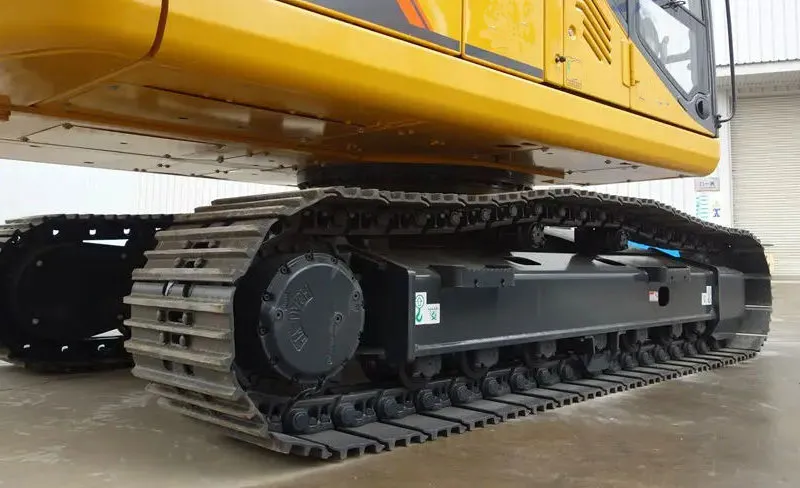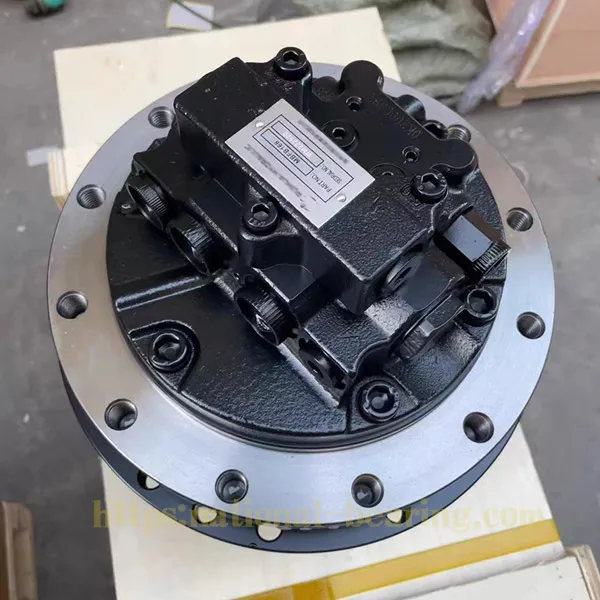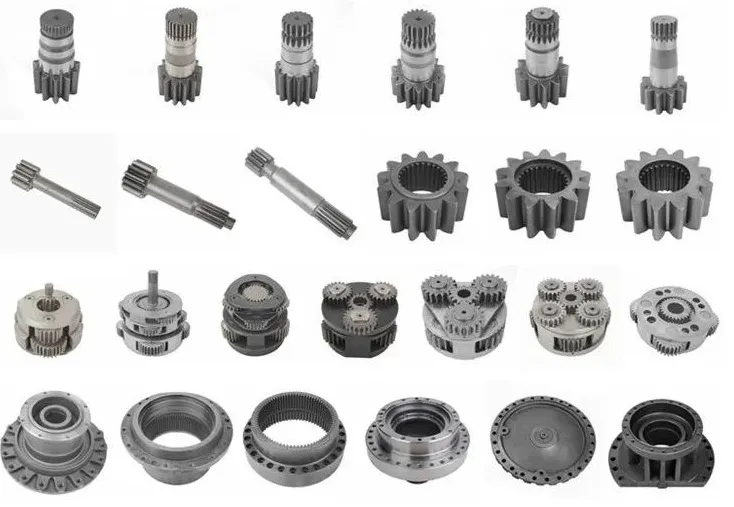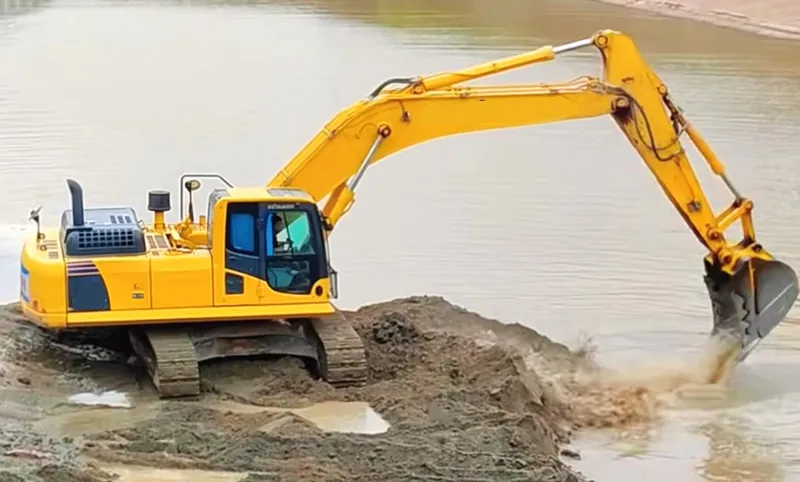
Excavators are essential machines in the construction and earthmoving industries. One of the key components that ensure their efficiency and functionality is the undercarriage. In this blog, we will explore the various undercarriage parts, their roles, and how they contribute to the overall performance of an excavator. Whether you are a seasoned operator or a novice, this guide will provide valuable insights into the world of undercarriage parts.
Tracks are a fundamental component of your excavator, serving as the primary means of movement around the work site instead of traditional wheels. Each track consists of a series of reinforced rubber track plates that are meticulously connected with durable pins and run over a system of rollers. This intricate design ensures that the tracks provide the necessary stability and traction, enabling the excavator to navigate various terrains with ease.
The construction of tracks involves high-quality materials and engineering to withstand the rigors of different working conditions. The reinforced rubber used in the track plates is designed to be highly resistant to wear and tear, as well as to environmental factors such as moisture, heat, and cold. The pins that connect the plates are made from robust metals, ensuring that the tracks remain securely fastened and capable of enduring substantial strain.
Tracks are engineered to distribute the weight of the excavator evenly across a larger surface area. This distribution reduces ground pressure, preventing the machine from sinking into softer ground and allowing it to operate effectively on unstable surfaces. The even weight distribution also minimizes the impact on the terrain, reducing the likelihood of damage to the work site.
Moreover, tracks provide superior grip and traction compared to wheels. The design of the track plates and the spacing between them allow for better contact with the ground, enhancing the excavator’s ability to move efficiently over uneven, rocky, or slippery surfaces. This improved traction is particularly beneficial when working on slopes or in muddy conditions, where wheels might struggle to maintain grip.
In addition to their functional benefits, tracks contribute to the overall stability of the excavator. The broad, continuous surface of the tracks ensures that the machine remains balanced, even when lifting heavy loads or operating on inclines. This stability is crucial for maintaining safety on the work site and for ensuring precise and controlled movements.
In summary, tracks are an essential feature of excavators, providing the necessary mobility, stability, and traction required for efficient operation in various environments. Their robust construction and thoughtful engineering make them a reliable and indispensable part of your excavator’s performance.
Tracks play a crucial role in enhancing the performance of an excavator. They distribute the weight of the machine evenly, preventing it from sinking into soft ground. This distribution also reduces ground pressure, making it easier to operate the excavator on unstable surfaces. Furthermore, tracks provide better grip and traction, allowing the machine to move efficiently even on uneven or slippery terrains.
The track frame is a critical component of the undercarriage, essentially forming the backbone of your excavator’s mobility system. This sturdy rectangular frame is meticulously engineered to provide the necessary support and stability for the entire machine. It is connected to the house—the main body of the excavator—via a robust center pin. This connection is pivotal as it allows for the rotational movement essential for various digging and lifting tasks.
At the heart of the track frame lies a sophisticated assembly of components, including the swing bearing, slew ring, and swing gear. These elements work in harmony to ensure that the excavator can hydraulically swivel around its axis, providing a full range of motion. The swing bearing is a crucial part of this system, designed to handle the immense loads and stresses that occur during operation. It allows for smooth and controlled rotation, ensuring that the excavator can perform precise maneuvers even under challenging conditions.
The slew ring, another vital component, is a large-diameter bearing that facilitates the rotational movement of the excavator’s house relative to the undercarriage. This ring is typically composed of a series of ball or roller bearings enclosed within a sturdy casing. The slew ring’s primary function is to distribute the loads evenly, reducing friction and wear, thereby enhancing the longevity and reliability of the excavator.
The swing gear, often integrated with the slew ring, is responsible for translating the hydraulic power from the excavator’s engine into rotational movement. This gear works in conjunction with the hydraulic motor to provide the necessary torque for smooth and efficient rotation. The precision engineering of the swing gear ensures that the excavator can handle heavy loads and perform intricate movements with ease.
The design of the track frame and its components is crucial for enhancing the excavator’s maneuverability and operational efficiency. The ability to rotate smoothly around its axis allows the machine to perform a variety of tasks with greater precision and control. Whether it’s digging trenches, lifting heavy materials, or navigating tight spaces, the track frame’s components work together to ensure optimal performance.
Moreover, the robust construction of the track frame provides the necessary support for the other undercarriage parts. It acts as a solid foundation, ensuring that the tracks, rollers, and other components function correctly. This stability is essential for maintaining the overall balance of the excavator, especially when operating on uneven or unstable terrain.
In conclusion, the components of the track frame are integral to the overall functionality and efficiency of your excavator. From the swing bearing and slew ring to the swing gear, each part plays a crucial role in ensuring smooth rotation, precise maneuverability, and enhanced operational efficiency. Understanding the importance of these components can help you maintain and optimize your excavator’s performance, ensuring that it remains a reliable and valuable asset on the work site.
A robust track frame is essential for the overall stability and durability of the excavator. It provides a solid foundation for the other undercarriage parts, ensuring that they function correctly. A well-maintained track frame can significantly extend the lifespan of the excavator, reducing downtime and maintenance costs.
The final drives are comprised of a gearing system and hydraulic motor that are both connected via a drive shaft to the excavator’s engine. The final drives provide the tracks with the power they need to move together and separately. This system is crucial for the smooth operation of the excavator, allowing it to perform various tasks efficiently.

Final drives consist of several key components:
Final drives work by converting the hydraulic power generated by the engine into mechanical power. This power is then transmitted to the tracks, enabling them to move. The ability to move the tracks independently is particularly useful when maneuvering in tight spaces or on uneven terrain. Proper maintenance of the final drives is essential to ensure the excavator operates smoothly and efficiently.

Maintaining the final drives involves several critical steps:
The blade may be an optional attachment on your excavator which helps the machine move loose material underneath it. This attachment is particularly useful for tasks such as leveling ground, backfilling, and clearing debris. The blade can significantly enhance the versatility and efficiency of the excavator.
Using a blade as part of your undercarriage parts can provide several benefits. It allows for more precise control when moving materials, reducing the time and effort required for certain tasks. Additionally, the blade can help improve the stability of the excavator when performing heavy-duty operations, making it a valuable addition to your machine.

Regular inspections are crucial to ensure the longevity and optimal performance of your undercarriage parts. Check for signs of wear and tear, such as cracks, loose bolts, or worn-out tracks. Addressing these issues promptly can prevent more significant problems and extend the lifespan of your excavator.
Proper lubrication is essential for the smooth operation of your undercarriage parts. Ensure that all moving parts, such as the swing bearing, slew ring, and final drives, are adequately lubricated. This reduces friction and wear, enhancing the efficiency and durability of your excavator.
Keeping your undercarriage parts clean is vital for preventing damage and ensuring optimal performance. Remove any dirt, debris, or mud that may accumulate on the tracks and other components. Additionally, store your excavator in a dry, sheltered area to protect it from the elements and reduce the risk of corrosion.
Understanding the various components of your excavator’s undercarriage and their roles is essential for maintaining and operating your machine efficiently. From the tracks and track frame to the final drives and optional blade, each part plays a crucial role in the overall performance of the excavator. Regular maintenance and proper care can significantly extend the lifespan of these undercarriage parts, ensuring that your excavator remains a reliable and valuable asset on the work site.
By following the tips and insights provided in this guide, you can optimize the performance of your excavator and ensure that it continues to operate smoothly and efficiently. Remember, a well-maintained undercarriage is the key to a successful and productive excavation project.